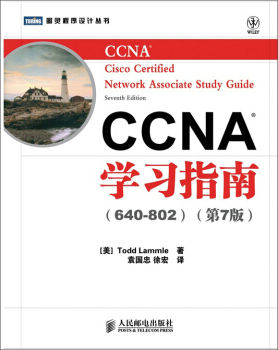信息安全原理与技术(第5版) / 英文版中文评注、经典译丛
作者: (美)Charles P.Pfleeger,Shari Lawrence Pfleeger,Jonathan Margulies 校注:李毅超
出版时间:2016年8月
出版社:中国工信出版集团
- 中国工信出版集团
- 9787121288593
- 45394
- 2016年8月
- TP309
Charles P.Pfleeger、Shari Lawrence Pfleeger、Jonathan Margulies编著、李毅超校注的《信息安全原理与技术(第5版英文版中文评注)》是信息安全经典著作,共12章,系统描述了信息安全的各个方面,实现了计算机安全领域的完整、实时、全面的覆盖,内容包括用户、软件、设备、操作系统、网络等,反映了迅速变化的攻击、防范和计算环境,介绍了最新的最佳实践,用户认证,防止恶意代码的执行,加密技术的使用,隐私的保护,防火墙的实现和入侵检测技术的实施等。第五版对当前信息安全领域的新课题都有涉及,加入了web交互、云计算、大数据、物联网和网络战等方面的安全技术,以及前沿课题的研究。
本书既可以作为信息安全或计算机专业本科、研究生的双语课教材,也可以作为相关领域研究人员和专业技术人员的参考用书。
Chapter 1 Introduction
概论
1.1 What is Computer Security
什么是计算机安全?
1.2 Threats
威胁
1.3 Harm
危害
1.4 Vulnerabilities
脆弱点
1.5 Controls
控制
1.6 Conclusion
总结
1.7 What’s Next
下一步是什么?
1.8 Exercises
习题
Chapter 2 Toolbox: Authentication, Access Control, and Cryptography
工具箱:鉴别、访问控制与加密
2.1 Authentication
鉴别
2.2 Access Control
访问控制
2.3 Cryptography
密码编码学
2.4 Exercises
练习
Chapter 3 Programs and Programming
程序和编程
3.1 Unintentional (Nonmalicious) Programming Oversights
无意的(非恶意的)程序漏洞
3.2 Malicious Code—Malware
恶意代码——恶意软件
3.3 Countermeasures
对策
3.4 Conclusion
总结
3.5 Exercises
练习
Chapter 4 Operating Systems
操作系统
4.1 Security in Operating Systems
操作系统的安全性
4.2 Security in the Design of Operating Systems
安全操作系统的设计
4.3 Rootkit
Rootkit
4.4 Conclusion
总结
4.5 Exercises
习题
Chapter 5 Databases
数据库
5.1 Introduction to Databases
数据库简介
5.2 Security Requirements of Databases
数据库的安全需求
5.3 Reliability and Integrity
可靠性和完整性
5.4 Database Disclosure
数据库泄露
5.5 Data Mining and Big Data
数据挖掘和大数据
5.6 Conclusion
总结
5.7 Exercises
习题
Chapter 6 Networks
网络
6.1 Network Concepts
网络的概念
6.2 Threats to Network Communications
网络通信的威胁
6.3 Wireless Network Security
无线网络安全
6.4 Denial of Service
拒绝服务
6.5 Distributed Denial-of-Service
分布式拒绝服务
6.6 Cryptography in Network Security
网络安全中的密码学
6.7 Firewalls
防火墙
6.8 Intrusion Detection and Prevention Systems
入侵检测和防御系统
6.9 Network Management
网络管理
6.1 0 Conclusion
总结
6.1 1 Exercises
习题
Chapter 7 Management and Incidents
安全管理和事件
7.1 Security Planning
安全计划
7.2 Business Continuity Planning
业务持续计划
7.3 Handling Incidents
事件处理
7.4 Risk Analysis
风险分析
7.5 Dealing with Disaster
处理灾难
7.6 Conclusion
总结
7.7 Exercises
练习
Chapter 8 Details of Cryptography
密码学精讲
8.1 Cryptology
密码学
8.2 Symmetric Encryption Algorithms
对称加密算法
8.3 Asymmetric Encryption with RSA
RSA非对称加密
8.4 Message Digests
消息摘要
8.5 Digital Signatures
数字签名
8.6 Quantum Cryptography
量子密码学
8.7 Conclusion
总结
Chapter 9 Privacy
计算机中的隐私
9.1 Privacy Concepts
隐私的概念
9.2 Privacy Principles and Policies
隐私的原理和政策
9.3 Authentication and Privacy
鉴别和隐私
9.4 Data Mining
数据挖掘
9.5 Privacy on the Web
网站上的隐私
9.6 Email Security
电子邮件安全性
9.7 Privacy Impacts of Emerging Technologies
对新技术的影响
9.8 Where the Field is Headed
领域前沿
9.9 Conclusion
总结
9.1 0 Exercises
习题
Chapter 10 The Web—User Side
Web和用户
10.1 Browser Attacks
针对浏览器的攻击
10.2 Web Attacks Targeting Users
针对用户的Web攻击
10.3 Obtaining User or Website Data
获取用户或网站的数据
10.4 Email Attacks
电子邮件攻击
10.5 Conclusion
总结
10.6 Exercises
习题
Chapter 11 Cloud Computing
云计算
11.1 Cloud Computing Concepts
云计算的概念
11.2 Moving to the Cloud
迁移到云端
11.3 Cloud Security Tools and Techniques
云安全工具与技术
11.4 Cloud Identity Management
云认证管理
11.5 Securing IaaS
加固IaaS
11.6 Conclusion
总结
11.7 Exercises
习题
Chapter 12 Emerging Topics
新兴问题
12.1 The Internet of ThingsChapter 1 Introduction
概论
12.2 Economics
网络安全经济学
12.3 Electronic Voting
电子投票
12.4 Cyber Warfare
网络战争
12.5 Conclusion
总结
Bibliography
参考文献







